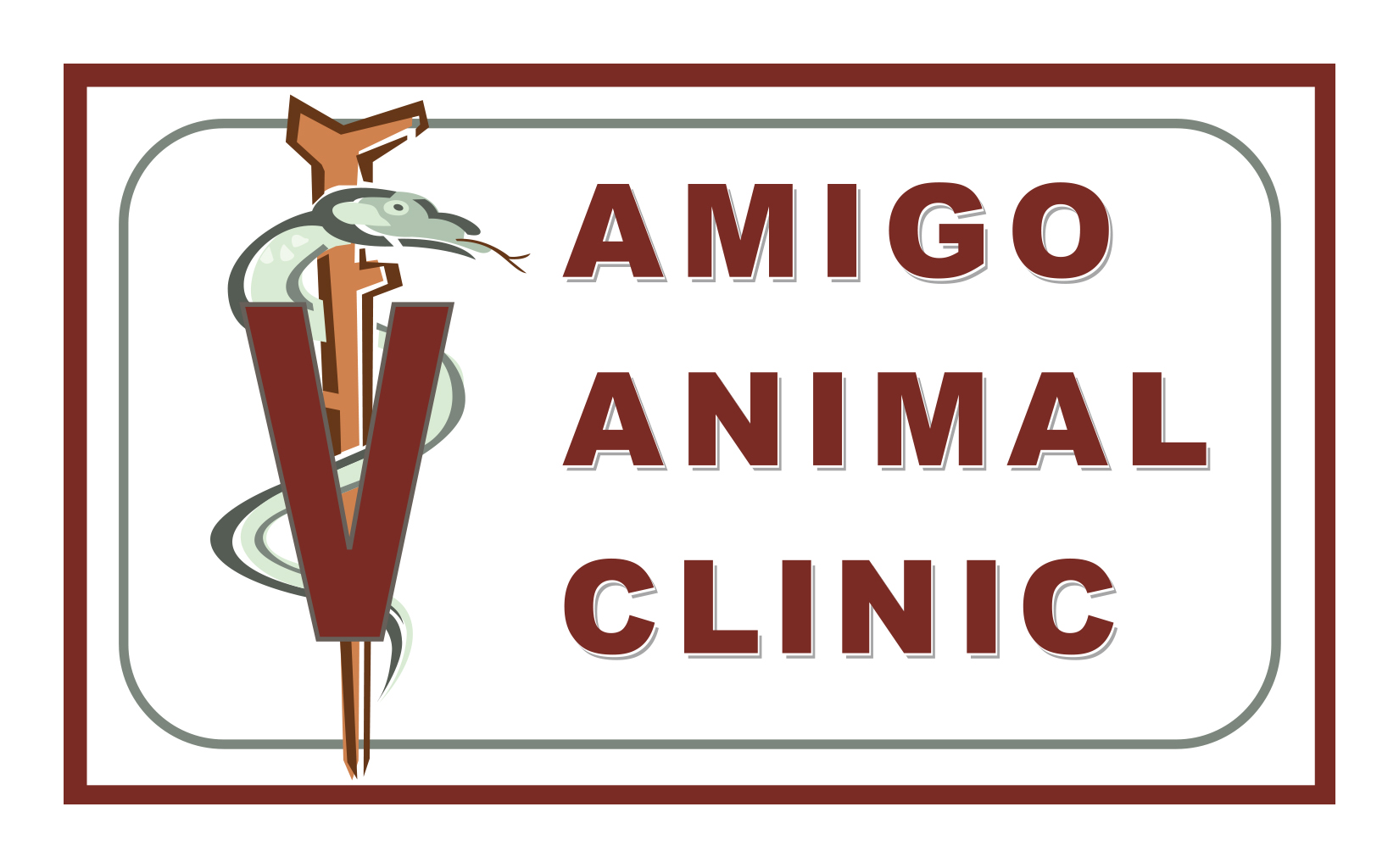You may experience a situation where your pet needs to be put under anesthesia. This could be a situation such as dental work or an emergency. Pet parents don’t want their pets to suffer from pain. But pet parents can be anxious and scared for their pets when they are put under anesthesia. Here at Amigo Animal Clinic we want to educate pet owners about anesthesia, so you know about it for your pet and what to expect.
When does a pet need anesthesia?
Anesthesia is a controlled unconsciousness. The purpose is to control your pet’s level of consciousness, so they don’t feel pain and they don’t move. It is critical that your pet not move during procedures such as teeth cleaning, dental x-rays and surgery. It is impossible to perform many of these procedures while your pet is awake.
Anesthesia for animals has come a long way and is safer than it has ever been before. Like any medical procedure, anesthesia does have risks. However, those risks are significantly minimized by appropriate case selection, pre-anesthetic testing, and diligent monitoring during the procedure. Most patients have no issues during or after anesthesia. A few patients have minor issues usually post anesthesia like mild vomiting, or lethargy. In extremely rare cases more severe problems can occur usually during the anesthesia.
Before Anesthesia
Prior to anesthesia your veterinarian will perform a thorough physical exam on your pet. They will also review your pet’s medical history and discuss any risk factors. If you have any questions about your pet’s health or his or her anesthetic risk, ask your veterinarian for an explanation that will help you make an educated decision. It is critical that we identify any potential complicating factors prior to anesthesia so that we can select protocols that minimize or negate any issues. Depending on the age of your pet we may recommend, and in some cases require, that certain diagnostic testing be performed such as blood and urine analysis, heart electrocardiograms, and sometimes x-rays, primarily to look for changes in the heart and lungs.
Prior to anesthesia, we will likely give your pet a pre-anesthetic sedative to reduce his or her stress, ease the process and help with pain management. Every case will have an intravenous catheter placed to allow administration of supportive fluids and medications. Your pet may receive the anesthetic by gas inhalation (using a gas anesthesia machine), intravenous infusion, or a combination of the two.
During Anesthesia
We monitor and care for your pet just like what you would receive if you underwent anesthesia. We monitor your pet’s vital signs, blood pressures and anesthetic depth. Your pet may also receive fluids or medications. Pain control is continued throughout this process. We will ensure that they stay warm during the procedure because low body temperatures can complicate anesthesia and result in a painful, prolonged recovery. The level of monitoring is critical to minimizing adverse events. Amigo Animal Clinic is well equipped and well versed in anesthetic monitoring. This is a critical step and it is important for you to know that it is not the same from one veterinary practice to another.
After Anesthesia
After the procedure, we will place your pet in a quiet space to recover. We keep them warm and comfortable with pads and blankets. We monitor your pet closely during this time to make sure that they are recovering normally. When your pet is ready to go home, we will provide you with a care sheet. It is important to read this fully and ask any questions you may have. If any painful procedures have been performed, we will send your pet home with pain medications to ensure a comfortable recovery.
Depending on the procedure and your pet’s medical condition, you may be able to take your pet home later the same day. Your pet may need to remain in the hospital longer. In this case we will inform you of how your pet is doing and when you can expect to bring them home.
What is “high risk” anesthesia?
We consider your pet “high risk” for anesthesia when your pet has certain health problems that increase their risk of severe complications during anesthesia. These are cases we will discuss extensively and likely test extensively prior to agreeing to put them under anesthesia at our clinic. In some cases, we will recommend referral to a veterinary specialty clinic that has a Veterinary Anesthesia Specialist available.
You Can Help Reduce Your Pet’s Risk
- Let us know if your pet has ever had a reaction to sedation or anesthesia.
- Tell us about any medications and supplements. This includes over-the-counter products.
- Keep your pet’s regular wellness visits. Regular care can make a big difference in keeping your pet healthy.
- Maintain your pet at a healthy weight.
- Take steps to prevent injuries to your pet whenever possible.
- Follow your veterinarian’s instructions before anesthesia.
- Fully read and follow your veterinarian’s instructions for care after anesthesia.
- Realize the additional testing we may request is for the safety of your pet.
Got Questions?
Amigo Animal Clinic‘s mission is to bring the highest level of care possible to the animals of Grand Junction, Colorado and surrounding areas. If you have any questions don’t hesitate to ask. Any one of our staff will be happy to help. If they can’t answer your questions, they will refer you to one of our staff who can.
What's Next
Call us or schedule an appointment online.
Meet with a doctor for an initial exam.
Put a plan together for your pet.

